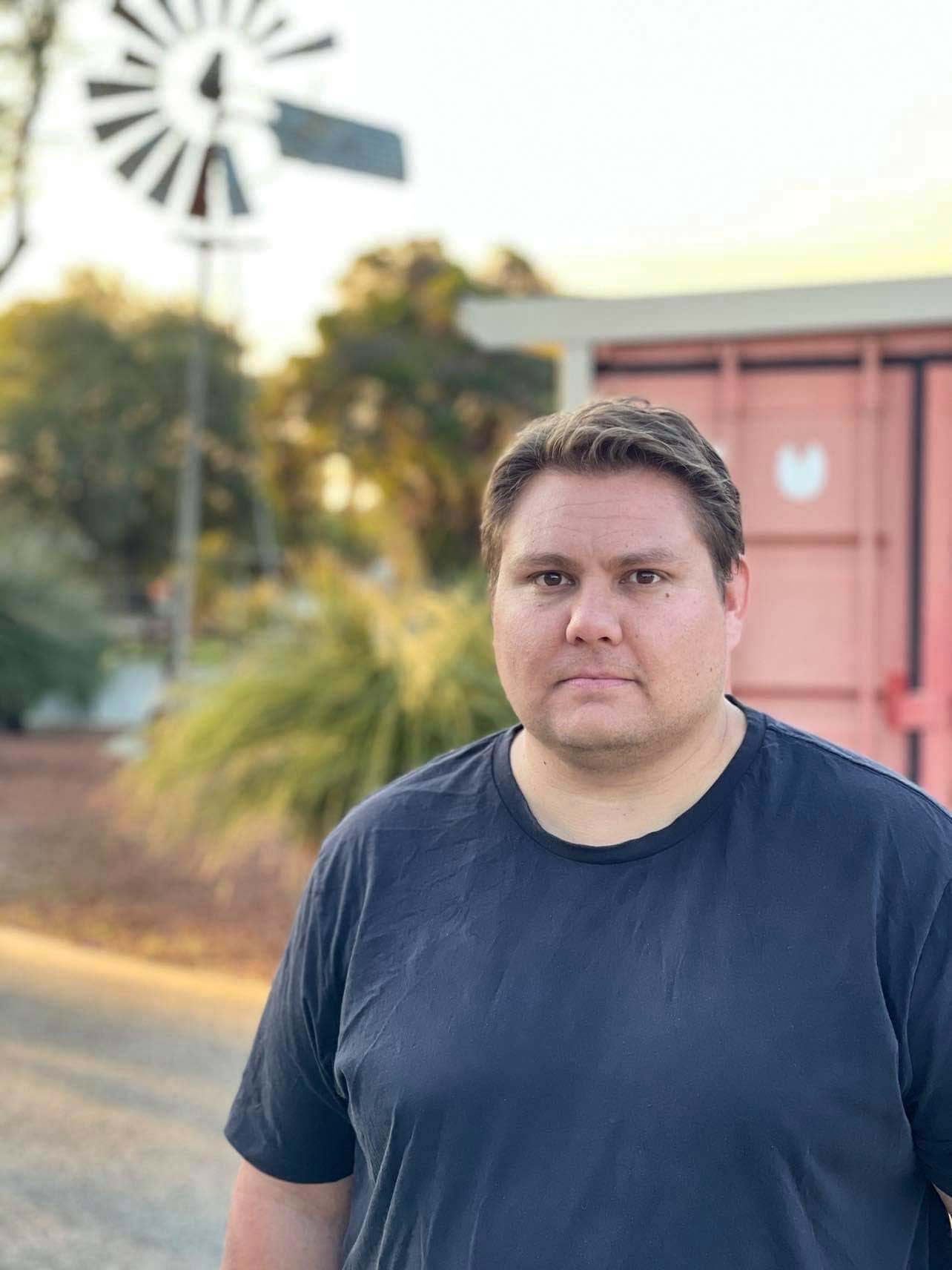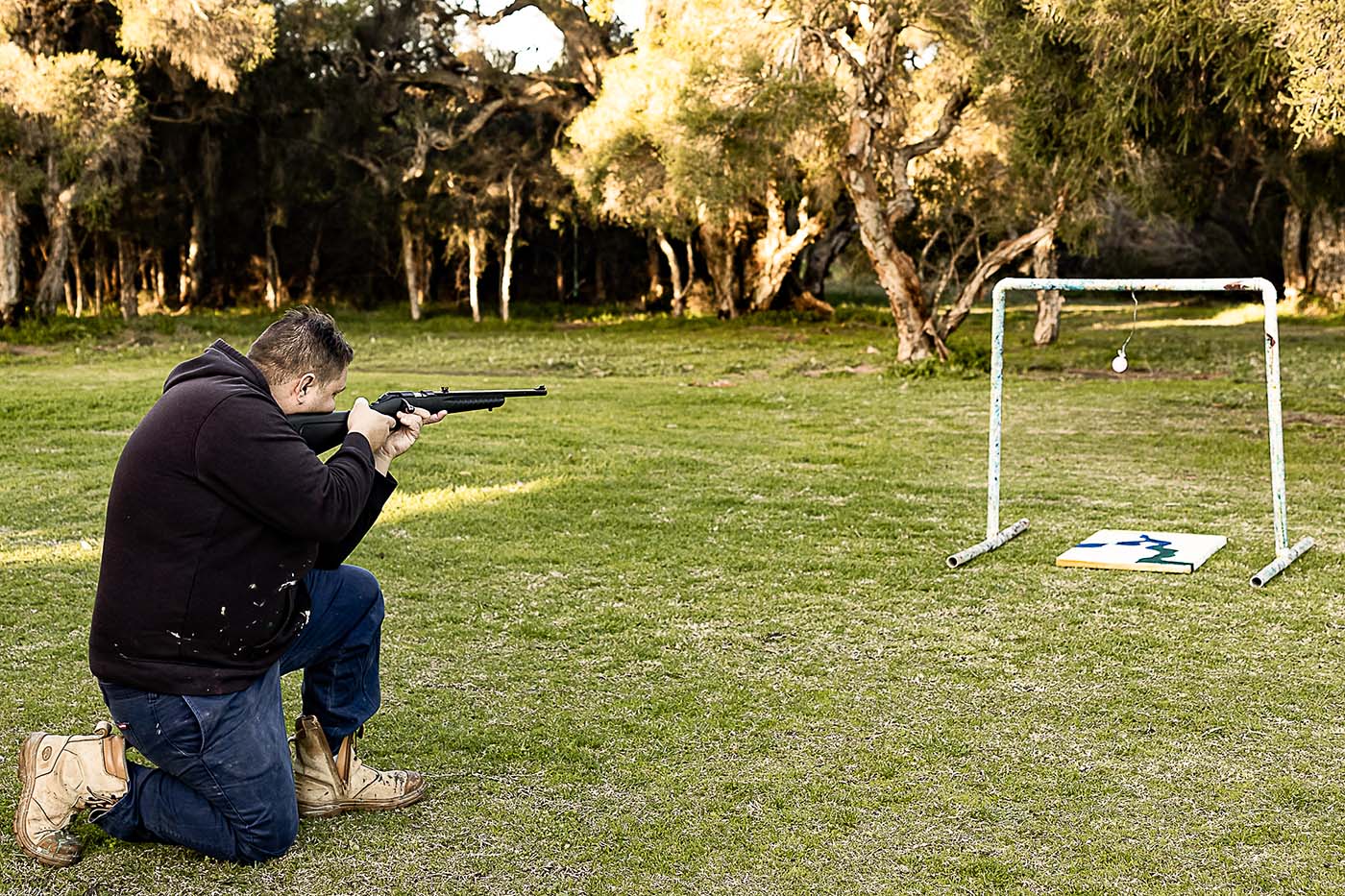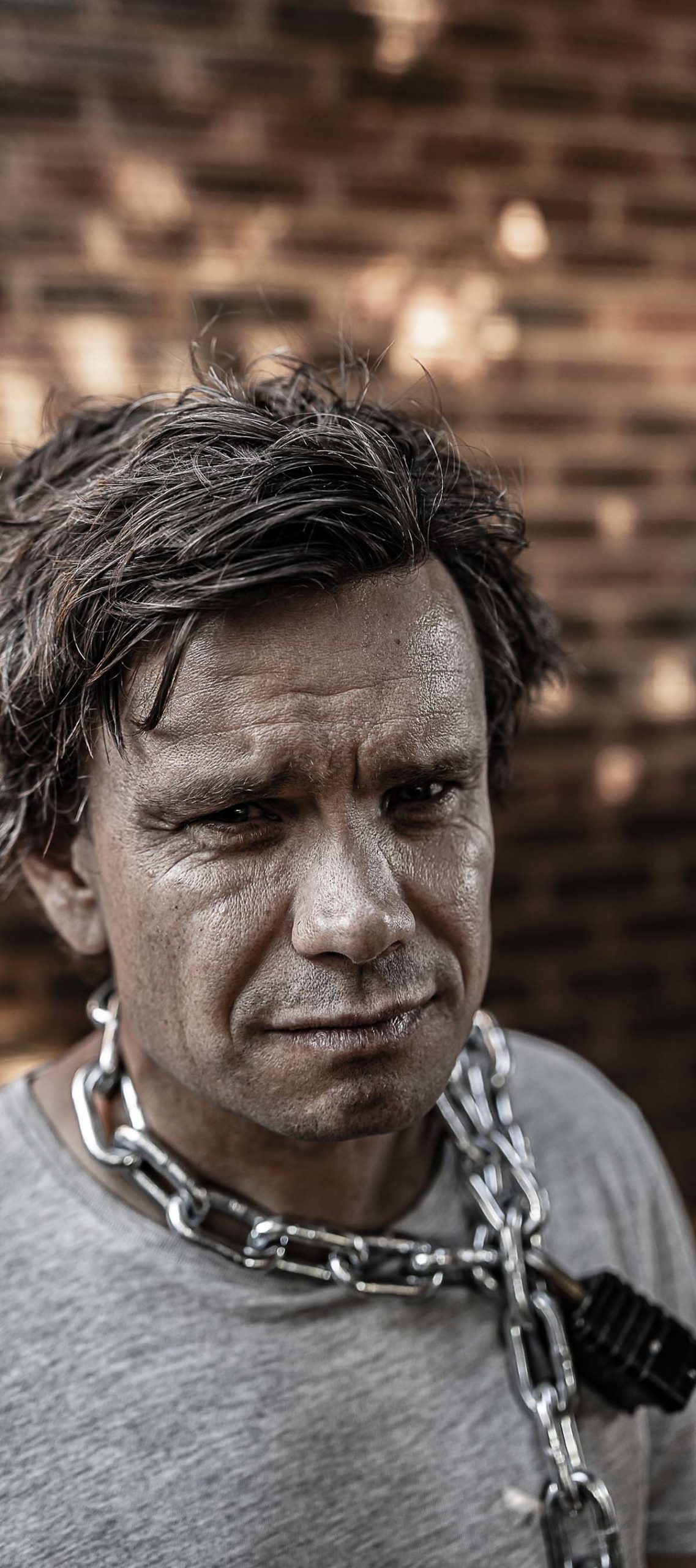Rohin Kickett
In this interview, we meet Perth Aboriginal artist Rohin Kickett. He talks about his art, this year's Fremantle Biennale project and his solo exhibition at Japingka Gallery planned for 2022.
How do you describe yourself when you're meeting someone for the first time?
If I was introducing myself to someone from overseas, I would call myself a contemporary Aboriginal artist. Someone a bit local, I'll call myself a Noongar artist, because they would understand Noongars are Aboriginal people from a specific location. If I'm talking to another person within my community, another Aboriginal person, I'll call myself a Ballardong Noongar. That's another specific region within the Noongar nation and I'd talk about my family connections. We'd be working out how that correlates with their family connections and where they are from? We work out our connections before we would move on with the conversation.
What art mediums do you use?
I predominantly use paint, I'm a painter. I do a lot of photography as well. I like to use different ways of mark making, where I incorporate a gun to shoot things and make them explode. I create art like that as well. I have a very contemporary side to my art practice. I have more of a traditional landscape side to my practice and then I have a photography-based side as well. I get bored very easily and these three things keep me busy.
Who are the artists that have inspired you?
Andy Quilty
A local artist called Andy Quilty. He's not an Aboriginal artist and his artwork was the first non-Aboriginal artwork to really resonate with me as an artist. He did a series of work on burnouts and me growing up in Gosnells, I had a V8 Torana. I used to do burnouts all over the place and the actual artwork that really resonated with me was called Cul-De-Sac. That was one of my favourite pastimes, finding a nice quiet cul-de-sac and I'd do a nice burnout in my Torana. It was a very abstract piece representative of a burnout with orange and black and my Torana was orange and black, so it really stood out to me. In viewing the burnout as a form of mark making, that really opened my eyes to the opportunities within my own art practice. How can I look at things from a different perspective when it comes to mark making?
Richard Bell
Another artist I admire is Richard Bell. He's one of my favourite artists. He's quite the character. He does a lot of advocacy within his art pieces and he was part of the Tent Embassy movement back in the '70s. He got into artwork because he could say things without getting arrested. So, he's quite out there. He's quite provocative. He creates a lot of discussion.
Shane Pickett
The Noongar artist who I'm really inspired by is Shane Pickett. He really changed my viewpoint of abstract within the cultural art realm. When I first saw his paintings, I thought to myself, "We can do that as Aboriginal artists? My uncles have told me, ``I can only do this." But yeah, he opened those doors to abstract viewpoints within art as well.
What do you think is important for an evolving artist to think about in their art practice? How do they develop their art practice?
I think it comes down to identity, to really looking into who you are as a person. How am I going to express that? What stories have shaped who I am as a person? I explain those to people, because people want to know who you are as a person. What makes you think differently as an artist? What experiences have you had, which have led to this point where you are now today as an artist and expressing that in your own unique style? I'm a concreter and for a few years there I've been using a concrete trowel. Now I've incorporated using a concrete trowel in my artwork when I'm applying paint. You can take all your little experiences as a person leading up to this point and you can use them in your own art practice to build who you are and express yourself in a unique way.
You are involved in the Fremantle Biennale on a project called the Commonwealth of New Bayswater. What can you tell us about that?
The Commonwealth of New Bayswater - Jessee Lee Johns
The artist is Jessee Lee Johns and I was introduced to him, and not in the sense of collaborating initially. The director of the Biennale just said, "I'll introduce you guys and see what happens." He obviously saw we would both get along. He saw his project might appeal to me. The Commonwealth of New Bayswater is a sovereign nation within Perth itself that Jessee created. He's built an embassy, a post office, a little restaurant and a little service station. This year he's also built a museum and he asked me if I wanted to put artwork in the museum to tell a story. I was like, "Okay, that's really cool." I love the idea of the sovereign nation and that got me thinking about what would a recolonization look like in a modern context, but using past policies?
In Our Shoes - Photography
I've got together an idea for the kinds of images I'd need to tell that story. I'm using people and locations of today, but with the past policies. You'll see people chained up like they did back in the day with the policies, as Stolen Generation, with kids being taken, telling that story. But the whole concept of our history is inverted. So, it's actually happening to white people, not Aboriginal people. The title of the exhibition is called In Our Shoes. I wanted to give non-Aboriginal people the idea of what it's like to look at Aboriginal history from an Aboriginal point of view. Growing up, I saw the people chained up who looked like my dad, they looked like my uncles. The Stolen Generation look like my cousins. Understandably, it doesn't resonate like this with people who can't see their own family in those images. I am attempting to create a connection with our history.
Video
There's a video piece too, where there's a mid 20s non-Aboriginal fellow and he talks about being stolen. The idea behind that comes from a time when I was flicking over the TV and I caught the Andrew Bolt show, The Bolt Report. He had an Aboriginal person on the panel. At the time, Andrew Bolt was trying to debunk the Stolen Generation and saying things like,” I've never met anyone stolen, it never happened. It's a conspiracy, but if it did happen, would it have been that bad?" Then he started interviewing this Aboriginal person who was fostered out as a child and that person continued to say how wonderful it was and how it saved his life, and he finally found love from a family.
It made me feel sick in the stomach and I thought, "What is the purpose of this?" So, I thought I'd try and recreate an interview to help, non-Aboriginal people feel the way I felt when I saw that on national TV, on Channel 10. It is quite confusing to start with, to hear this interview from a person who looks like him. It takes you a minute or two to wrap your head around that. But it does make you think in a different way.
Museum of History.
The work is located on Blackwall Reach Parade in Kent Street, corner of Blackwall Reach and Kent Street. There's a jetty right near it and it's just off the road in between the jetty and the road. It's a museum and when he found my concept and he thought of an inverted history, then he decided to call it The Inverted Museum of History. He's built kind an L-shaped type of structure and the actual artwork's on the outside. It's an inverted museum, so the information's on the outside with an inverted history.
Where are you up to in your preparation phase now?
All the photos and the video work is completed. I’ve just got to figure out how I'm going to mount the images and how I'm going to hang them.
What are you hoping that people will get from the experience?
When I look at the two cultures, there's a serious lack of understanding and one culture has lived this history and it's not taught to the other culture. So, there's this complete misunderstanding. There's no idea of what's actually happened. My work is a way of teaching and to try and give people the opportunity to view our history and form their own opinion. Then hopefully they get some sort of empathy for what's actually happened.
What has it been like working with the other artists?
It's been quite a natural process. We have reacted to each other's ideas. Where he had this idea already, and then I reacted to that, then he reacted to it again. So, it's been quite nice, just a naturally forming collaboration.
What can you tell us about the creative process for you?
I always attack things with a little bit of humour, because it is quite a dark topic. I find, if you attach a little humour to it, it lightens it a bit and it's then more relatable and people might get a bit of a chuckle out of it and then read it and go, "Whoa." Then it sinks in, but you need to spike their interest first with that slight bit of humour, I find. That just comes from me being a bit of a sarcastic smartass, in a sense.
How does this project connect to you at a personal level?
Growing up, I've always been asked about my history and I'm a tradesman, I'm a boiler-maker, welder by trade. So in the workshops, lots of tradesmen would ask me about my history, my family history. When I'd tell them they would just say, "That never happened. We were never taught that at school, so it never happened." Then they'd walk off. I'd think, "Well, how can you say that?" It just didn't make sense to me. So, to be able to do this on such a scale for so many people to see, means a lot. It makes me feel better to be able to be heard and not just dismissed. The dismissal is quite a powerful thing.
Is there any part of the Biennale project that surprised you or moved you?
I think the acceptance from all the artists of the idea that I wanted to do. They all loved it and there was no pushback. There was no questioning, it was just, "Oh, that's really awesome. There's no line. “Just do what you want to do, as far as you want to take it." There were no limitations.
What do you tell people about the show?
It depends on how well they know me. I would encourage you to just have a look and hopefully you have a bit of a chuckle and learn something.
You've got a solo exhibition scheduled for next April at Japingka. How do you feel about that?
I'm feeling really excited. Working with the Biennale, I love it, but I can't wait for it to be over because I'm keen to get going. Then working for that exhibition. I will just be me in my studio doing what I love doing, a lot of late nights over the summer. I can't wait for it and being able to show my work at Japingka Gallery. I'm really excited to meet the guys there and to work with them.




